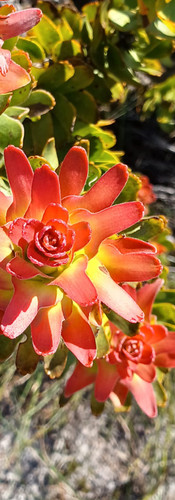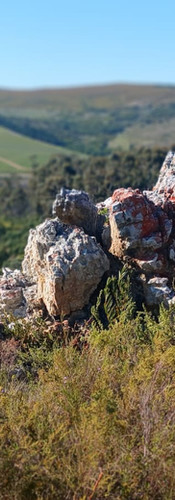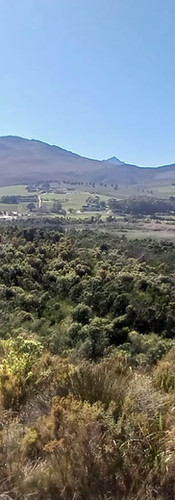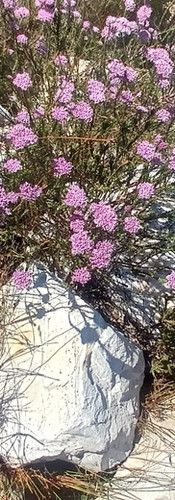Eco-Psyc Journal 3 - 1 Oct, 2024
- Adriaan van Zyl
- Oct 5, 2024
- 3 min read
A year ago, I returned to South Africa after spending around two decades in the US (mostly in California). I found myself settling in a coastal town called Onrus, named after the river that winds through the mountain valleys and empties into the cold southern ocean. The river naturally nourishes a very ancient and dense underwater kelp forest in the bay. I arrived just weeks after a massive rainstorm had flooded the area—one of those rare, destructive storms that leave their mark for years. The sea churned, rolling its black waves, stirring up debris for weeks. The name of the river, Onrus—meaning "restless" or "unrest"—seemed particularly fitting.
A fellow repatriate recently mentioned that the river was named during the time a leper colony was located upstream. Established around 1817 on a farm called Attakwaskloof, the colony was a place of refuge for people suffering from leprosy. The inhabitants at the river’s mouth named it Onrus, reflecting the suffering of the lepers upstream. Although this is an unconfirmed narrative, I find it meaningful—a way to connect the landscape with the complex histories it holds.

The valley’s original inhabitants were the Attaqua Koi tribe, with "Attakwa" meaning "Men of Atta." Atta likely refers to the place or an ancestral figure or leader central to their identity. Over time, many of the Khoikhoi and San tribes in the Western Cape were converted by Moravian Church missionaries. These missionaries, based across the valley, not only played a significant role in the leper colony but also renamed the valley Hemel en Aarde—"Heaven and Earth."
None of the lepers were there by choice, but by the cruel force of their illness. About 400 lepers are said to be buried in the valley. In 1825, the traveler Teenstra passed the hospital and remarked that the building was very large, but the windows were set so high that from the outside it looked like a prison. Eventually, in 1846, the remaining patients were transferred to Robben Island, which later housed political prisoners during apartheid. By 1989, there were no traces of the colony’s buildings, only a heap of stones marking its place. Fearful that leprosy was still contagious, farmers had demolished the remains of the colony.
After the lepers left, the farm was divided into two, one named Volmoed, meaning "full of courage," in recognition of those who had ministered to the lepers. In 1986, the Volmoed community was established as a Christian retreat, offering spiritual care and a space for reconciliation.
I visited Volmoed this week, hiking to a windy observation point that overlooks the entire valley, with the river and ocean stretching out on either side. The walk took me across a river, through a forest, over ochre and burnt-orange soil, and past oak trees planted hundreds of years ago by settlers. As I climbed higher, I crossed a sacred spring, its waters shimmering over the sandstone, feeding the land in a quiet, eternal cycle.
When I left this valley almost 25 years ago, there was little here—just a gravel road, small flower farms, and a few dairy farmers. To my adolescent mind, it was a quiet, rural place with few signs of change. But today, the valley has transformed into a bustling wine region, home to "award-winning" vineyards and a destination for high-end tourism. Helicopters now zoom overhead during the high season, taking tourists on private wine tastings before flying them over Walker Bay to spot whales on their migration. The valley, once so still and isolated, is now alive with commerce and wealth.

As I walk this paths, I realize how much has changed—not just in the land, but in me. The once-quiet valley of my youth now feels both familiar and foreign, shaped by time and memory. And yet, despite the changes, there is something timeless about this land. Perhaps it’s the way the mountains still cradle the valley, or the way the river, even restless, continues its course to the sea.
Returning here has stirred something deep within me—a recognition that while landscapes change, they also hold echoes of the past. Just as the valley has grown and evolved, so have I. And as I stand at the windy overlook, gazing across the land that once felt so small, I feel a connection to this place that goes beyond nostalgia. It's a recognition of the layers of history, both personal and collective, that shape the land and the people who live here.






















Comments